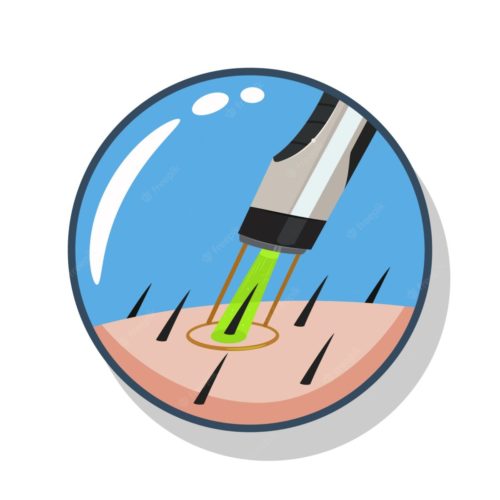
How it works
Laser hair removal is a medical procedure that uses a concentrated beam of light (laser) to remove unwanted hair.
During laser hair removal, a laser source emits a light that is absorbed by the pigment (melanin) in the hair. The light energy is converted to heat, which damages the tube-shaped sacs within the skin (hair follicles). This damage inhibits or delays future hair growth.
Although laser hair removal effectively delays hair growth for long periods, it usually doesn’t result in permanent hair removal. Multiple laser hair removal treatments are needed for initial hair removal, and maintenance treatments might be needed as well. Laser hair removal is most effective for people who have light skin and dark hair, but it can be successfully be used on all skin types.
Why is it done?
Laser hair removal is used to reduce unwanted hair. Common treatment locations include legs, armpits, upper lip, chin and the bikini area. However, it’s possible to treat unwanted hair in nearly any area, except the eyelid or surrounding area. Skin with tattoos should not be treated either.
Side effects;
Risks of side effects vary with skin type, hair color, treatment plan and adherence to pre-treatment and post-treatment care. The most common side effects of laser hair removal include:
- Skin irritation. Temporary discomfort, redness and swelling are possible after laser hair removal. Signs and symptoms should typically disappear within several hours
- Rarely, laser hair removal can cause blistering, crusting, scarring or other changes in skin texture. Other rare side effects include graying of treated hair or excessive hair growth around treated areas, particularly on darker skin.
- Laser hair removal isn’t recommended for eyelids, eyebrows or surrounding areas, due to the possibility of severe eye injury.



